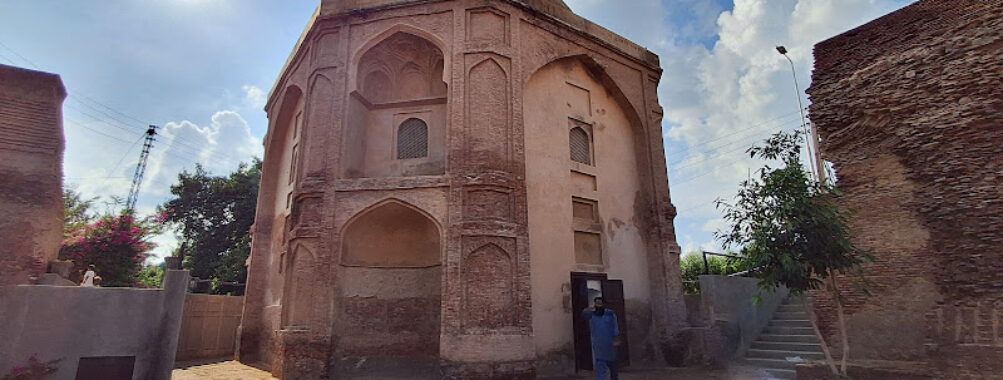
Tomb of Mir Chakar-i-Azam Rind
Table of Contents The Tomb of Mir Chakar-i-Azam Rind in Satghara, Pakistan, is a historic landmark that carries both cultural and emotional weight for travelers with a keen interest in South Asian history. It serves as the final resting place of Mir Chakar Khan Rind, one of the most influential Baloch leaders of the 15th and 16th centuries. Known for his role in uniting the Rind tribe and shaping the course of Baloch history, he later became an ally of Emperor Humayun during a turbulent period of Mughal and Afghan rivalries. Few figures from that era have left such a distinct footprint, and his tomb stands as a solemn reminder of tribal strength, loyalty, and leadership. Visiting the tomb is a rich experience that combines architecture with lore. The design shows hallmarks of early Mughal-era construction, blending strength with simplicity. Its dome and structure, though weathered by centuries of exposure, still reflect the aura of authority Mir Chakar Khan Rind carried in life. Some people describe the site as serene, spiritual even, while others point out its rugged, raw charm—perhaps a reflection of the warrior whose legacy it upholds. The area around the tomb also offers a glimpse of rural Punjab region life, where traditional customs remain part of everyday rhythms. Accessibility is one of the aspects that makes the site more welcoming. The tomb has a wheelchair accessible entrance and nearby parking, which is not always common for heritage sites in Pakistan. Families often feel comfortable bringing their children too, not only because of the open, safe space but also because it sparks curiosity about tribal clans, kings, and wars that shaped this land. Sure, it isn’t polished like some modern tourist attractions—cracks in walls, uneven surfaces, and simple maintenance efforts make that clear—but that’s also part of why it feels authentic. You don’t walk into a staged museum setting; you stand in a place that’s endured five centuries. For travelers, particularly those who admire historical figures like Sher Shah Suri or Emperor Humayun, a visit to this tomb adds another layer of narrative. Mir Chakar became a powerful chieftain in Balochistan, moved to Punjab later in his life, and eventually established his new base in Satghara. The tomb, therefore, symbolizes both the movement of tribes across regions and the blending of cultures. It marks where history shifted in the 16th century when shifting allegiances determined the rise and fall of rulers. The atmosphere is contemplative, though not without its imperfections. You may find the site quiet during weekdays, giving you uninterrupted time to admire its details, while weekends sometimes attract local visitors who see it less as a tourist landmark and more as a piece of living heritage. Conversations with people in the area often reveal fascinating oral traditions about Mir Chakar’s legacy, stories that don’t appear in textbooks but carry deep meaning for Baloch people to this day. What makes this place stand out is its rawness. It isn’t heavily commercialized, and that simplicity, in my opinion, is a huge advantage. You’re more likely to hear the wind against old stone than traffic noise or loud tour guides. If you’ve ever wished to pause time and think about what life was like hundreds of years ago, the Tomb of Mir Chakar-i-Azam Rind offers that chance. It’s a blend of architectural endurance, cultural resilience, and untold history that still resonates across Pakistan and the wider story of the subcontinent.Description
Location
Places to Stay Near Tomb of Mir Chakar-i-Azam Rind
Find and Book a Tour
Explore More Travel Guides
No reviews found! Be the first to review!